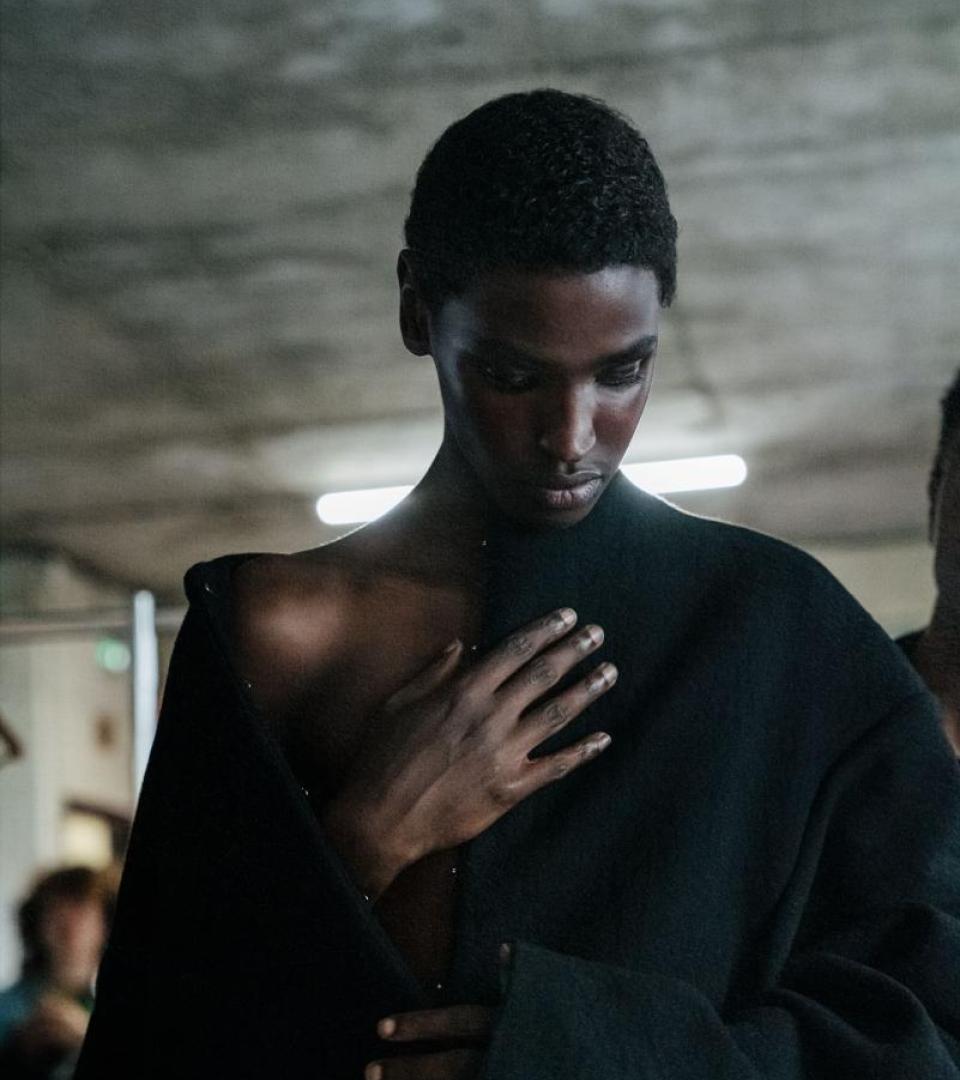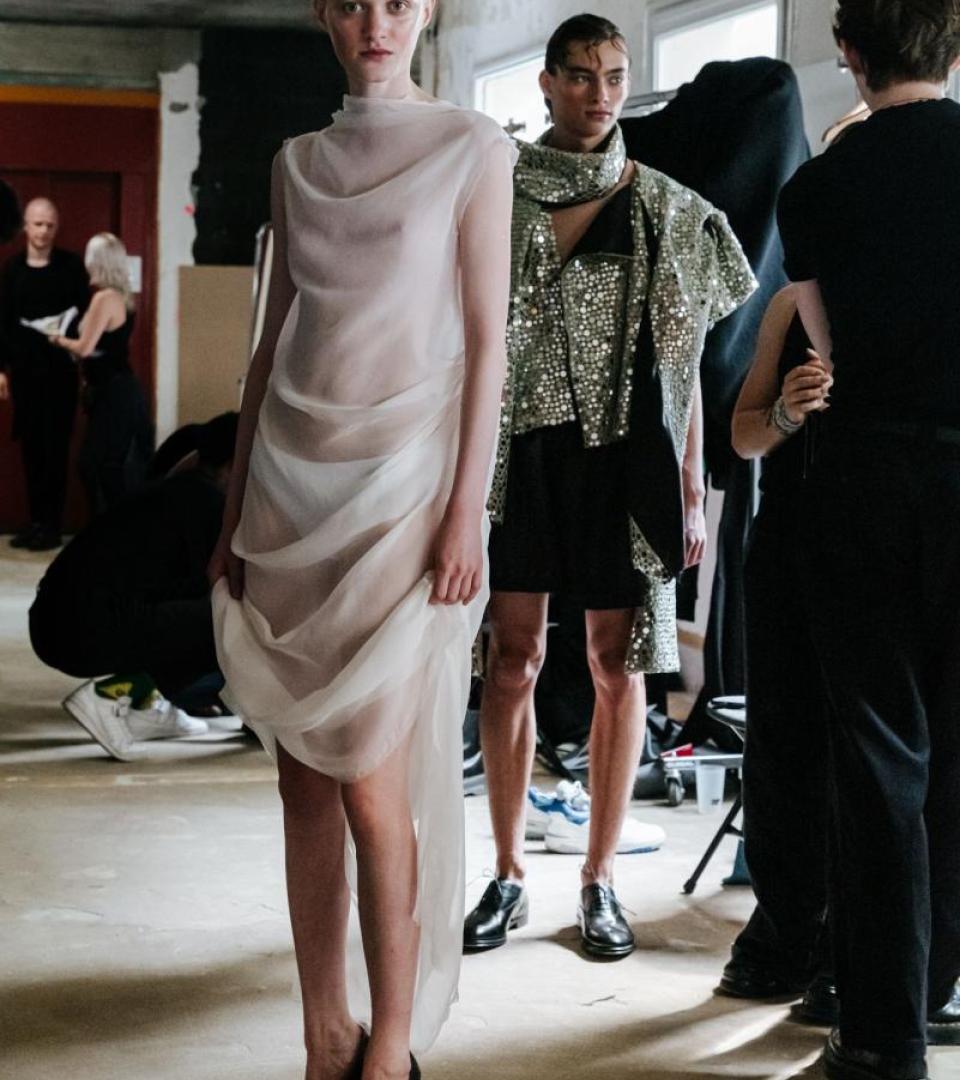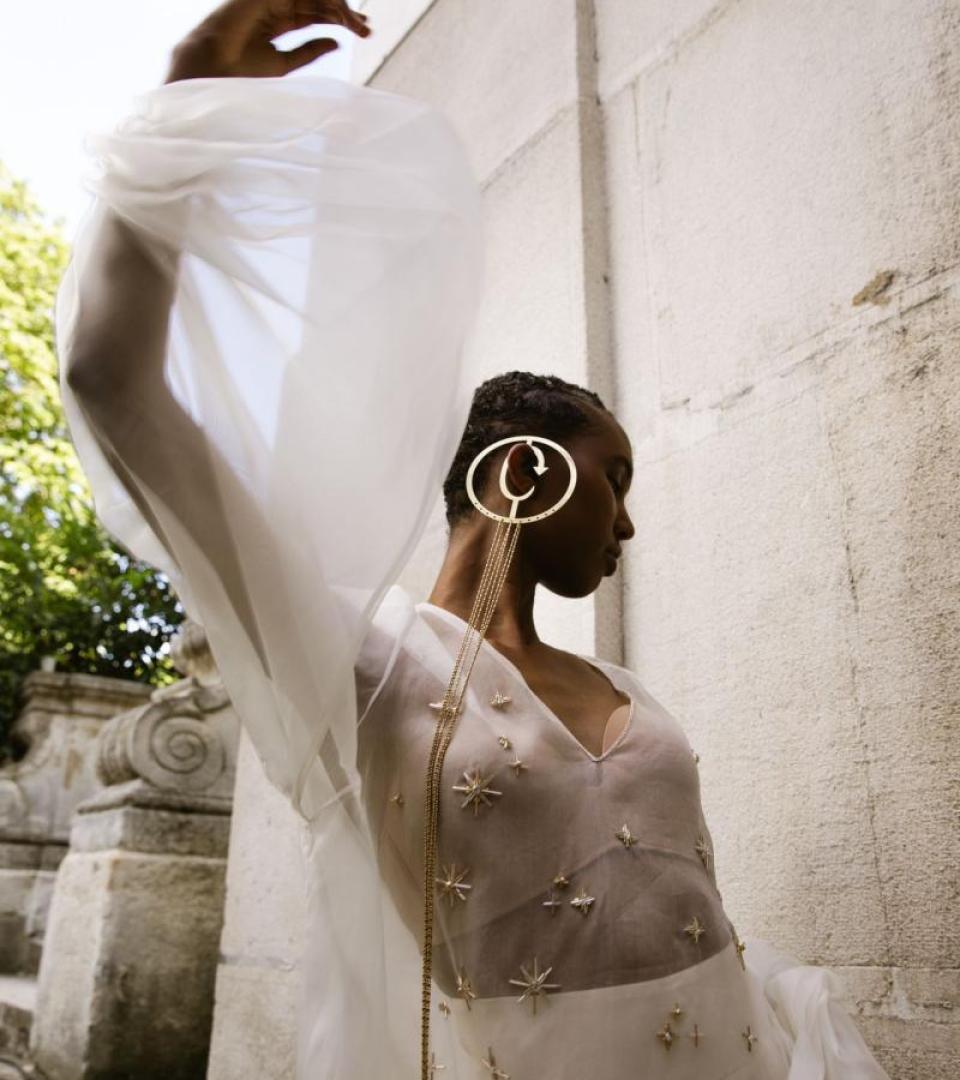What are your thoughts about the significance of this season given so many major designer debuts?
It’s about change. It’s exciting to see shifts, new stories and beautiful combinations.
What excites you in fashion right now?
The fact that people still need it deeply. Fashion is not just decoration, it is memory and emotion translated into fabric, handwork and shapes. Right now, what excites me most is how fashion becomes a space of escape, a way to hold beauty and fragility in a world that often feels unstable.
What is one reason to be optimistic about the state of fashion going forward?
Fashion has always survived by transformation. It reinvents itself constantly, just as people do. Even in uncertain times, creativity finds its way — and in fact, it often thrives under pressure. That resilience is a reason to stay optimistic.
This is your first show on the Official Paris Fashion Week Calendar. Why was the format of a show necessary to your collections?
For me, a show is not just a format, it’s a living stage where clothes breathe. It allows me to create a 360-degree experience: the movement of the garments, the architecture of a space, the music, the personalities of the models, all of it becomes part of the story. Clothes are not still objects, they exist in relation to bodies, time, and emotion. A show is the best way to express that.
In your creative process, at what point does the question of set design arise? What have you envisioned for this season?
The set is never an afterthought, it grows alongside the clothes. From the first ideas we ask: “Where does this woman exist? What space surrounds her? What fragments of the city echo her mood?" This season it was all about change. A woman constantly transforming, rushing from one life into the next. That’s why we chose the Passy metro stop in Paris. Models emerged from apartment doors, caught in-between places, never arriving, always on the move. It wasn’t about building anything new, but about amplifying what was already there. The location itself became part of the narrative of urgency and imperfection.
What are your thoughts on circular design for set design?
Circularity, for me, is about restraint and respect. We don’t build temporary worlds that disappear the next day. Instead, we look for existing spaces that already carry atmosphere and history. By working with what is already there, we avoid waste but also tap into authenticity, the poetry of a place layered with memory. It’s raw, simple, and aligned with how I see fashion: transformation without excess.
What are the main elements that make your work unique and fulfilling?
I try to stay very close to the heart. Each collection is less about perfect objects and more about communicating an idea, a story, a dream, sometimes even a failure that becomes beauty. What makes it fulfilling is when people don’t just wear the clothes, but feel understood by them — when they see themselves in the imperfection and transformation.
Do trends still matter?
Not to me. The speed of today makes the idea of a “trend” almost absurd. Everything is mixed, recycled, reinterpreted at such a pace that it becomes noise. I prefer to focus on identity, on what feels urgent and true in the moment. That lasts longer than a trend ever can.
What are the key cultural or societal influences shaping womenswear today, and how do they inform your creative direction?
Women today live in constant transformation: shifting roles, shifting expectations, shifting identities. That tension is what I design into the clothes: garments that carry imperfection, garments that can change quickly, garments that hold both strength and vulnerability.
My work is always built on contrasts: functionality versus emotion, spontaneity versus precision. The Julie Kegels woman is elegant but never rigid. She allows humour, curiosity, and ease into her style. She knows that imperfection is not weakness, but identity.
Given current uncertainties, in what ways do you see brands/houses effectively driving business growth?
The future belongs to brands that create resonance, not just products. Growth comes from building communities around stories, values, and emotions. Smaller brands can do it by being radically authentic, by connecting directly with their audience in intimate ways. Growth today is not only about scale; it’s about depth of connection.
In what ways is AI helping you develop and realise ideas that might not have been previously possible?
AI has become a kind of invisible assistant: organizing, planning, creating structure in the chaos. It doesn’t replace creativity, but it clears mental space so I can focus on what matters: the emotional, human essence of design.
Your brand is relatively young. How do you think you can develop it in the current fashion scenario?
It is not relatively young, it is very young. This is only our fourth collection. That youth is a strength because it allows curiosity and experimentation without heaviness. Development for me is not about speed, but about precision. I prefer to grow slowly, step by step, building a strong identity rather than chasing size. In a system obsessed with acceleration, the real luxury is patience: to build something intimate, authentic, and lasting.
This interview has been lightly edited.



